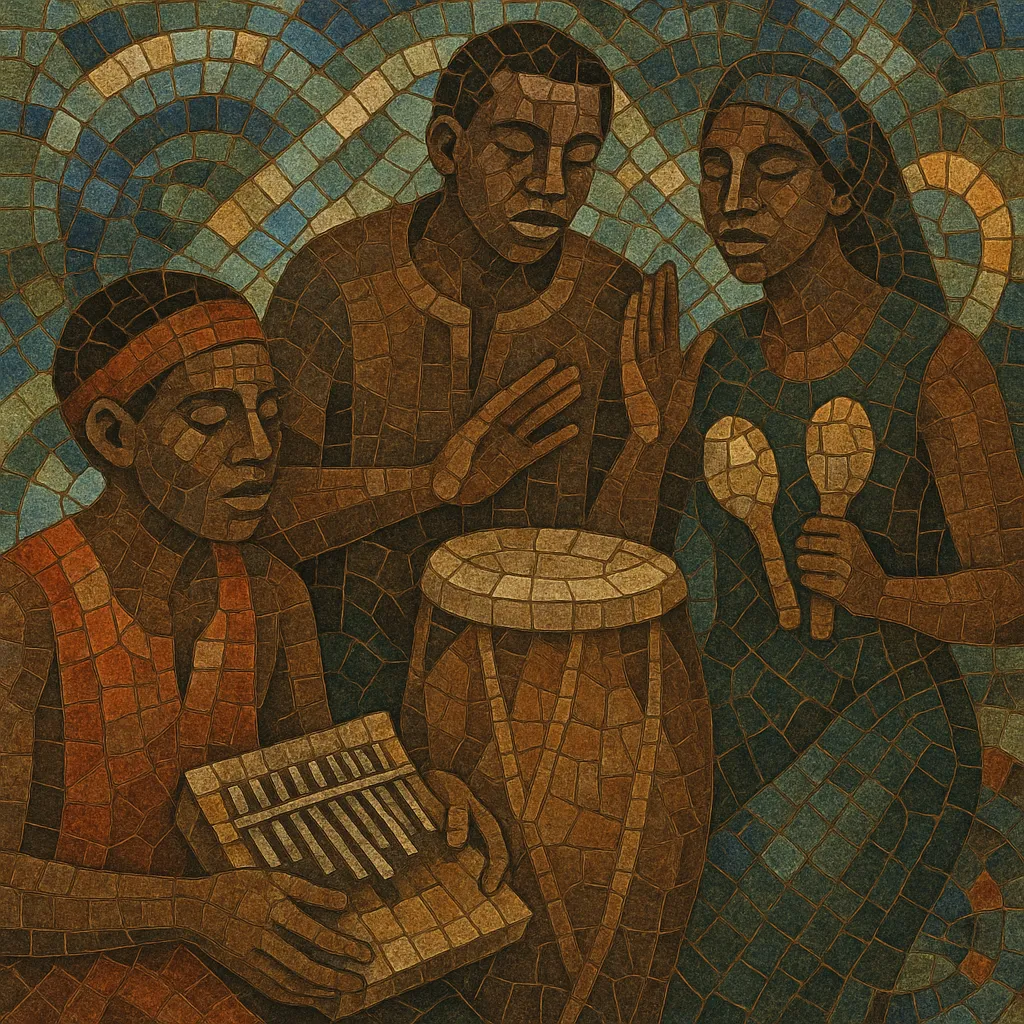Shona music is the traditional music of the Shona people of Zimbabwe, centered on interlocking cyclical patterns played on lamellophones such as the mbira dzavadzimu, mbira nyunga nyunga, and matepe. These instruments are accompanied by hosho shakers whose off‑beat accents create a propulsive, trance‑inducing groove.
The music features call‑and‑response vocals, dense polyrhythms in a 12/8 feel, and modal melodies based on indigenous tunings (e.g., nyamaropa, mavembe/gandanga). Repertoire pieces like “Nhemamusasa,” “Nyamaropa,” and “Mahororo” are performed in extended cycles that evolve through variation and improvisation.
Rooted in spirit-possession (bira) ceremonies and communal life, Shona music also underpins modern Zimbabwean styles such as chimurenga, jit, and sungura, and has become a global emblem of mbira traditions.
Shona music traces back many centuries, with lamellophone traditions (mbira families) flourishing as part of spiritual and communal life. At bira ceremonies, mbira ensembles invite ancestral spirits through cyclical music, call‑and‑response singing, and dance. The buzzing timbre (created with metal bottle caps or shells on the soundboard) is culturally valued for its enveloping resonance.
During the late 19th and early 20th centuries, colonial pressures disrupted musical life, yet mbira traditions persisted in rural communities. Early ethnographic recordings and missionary accounts documented mbira performance practice, tunings, and repertory, helping preserve knowledge even as urbanization accelerated.
From the 1960s–1980s, artists adapted Shona musical logic to guitars, keyboards, and drum kits. Thomas Mapfumo’s chimurenga popularized mbira‑derived guitar patterns and socio‑political lyrics. In parallel, jit and later sungura drew on Shona rhythmic cells, accelerating tempos for dance floors. Meanwhile, master mbira players maintained ceremonial and concert traditions at home and abroad.
From the 1970s onward, musicians and scholars such as Dumisani Maraire, Ephat Mujuru, and Paul Berliner helped introduce mbira to international audiences. Recordings, tours, and university programs catalyzed a worldwide mbira community and influenced worldbeat and world fusion scenes, while Zimbabwean groups continued to innovate within traditional frameworks.


